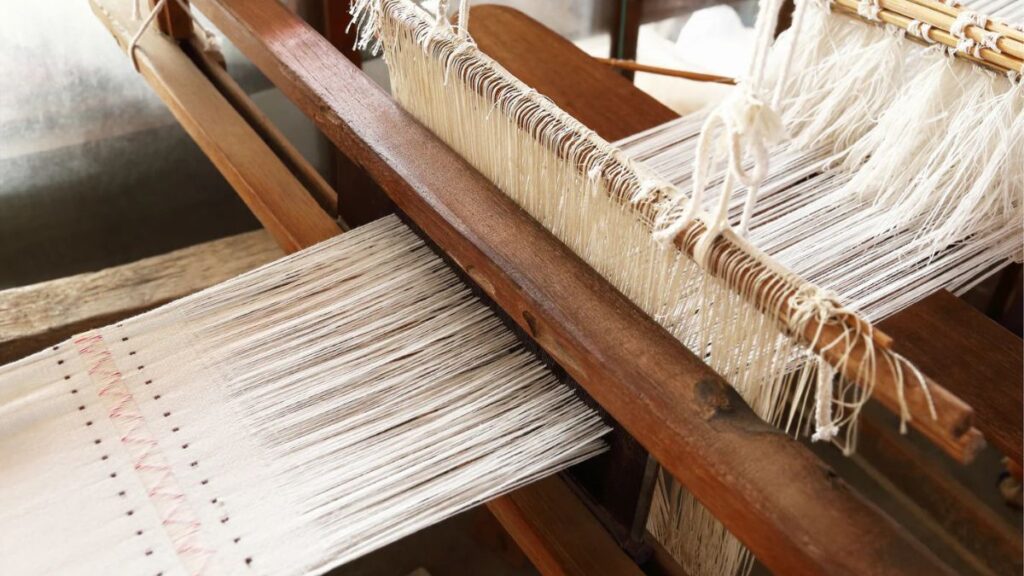Introduction to Chempazhanthy and its history
Nestled in the embrace of Kerala’s lush landscapes, Chempazhanthy stands as a vibrant testament to India’s rich cultural heritage. This small village, often overshadowed by bustling cities, pulses with life through its traditional handloom weaving practices. For centuries, artisans have woven stories into every fabric, blending age-old techniques with the spirit of their ancestors. As you stroll through the narrow lanes lined with colorful threads and intricate patterns, it becomes clear that Chempazhanthy is not just a place; it’s a living canvas where tradition dances harmoniously with creativity. Join us on this journey to explore how this quaint village has shaped the art of handloom weaving and continues to keep its legacy alive amidst modern challenges.
The significance of handloom weaving in Chempazhanthy
Handloom weaving in Chempazhanthy is more than just a craft; it’s a way of life. This village, nestled in the heart of Kerala, has long been synonymous with vibrancy and creativity woven into every thread.
The intricate designs tell stories that echo the region’s rich cultural heritage. Each piece reflects not only skill but also deep-rooted traditions passed down through generations.
For local artisans, handloom weaving offers both economic sustenance and artistic expression. It fosters community ties as families often work together to create unique textiles that are cherished by many.
Moreover, these handmade fabrics support sustainable practices. Unlike mass-produced garments, they have minimal environmental impact while celebrating craftsmanship instead of commodification.
Chempazhanthy’s weavers infuse their creations with passion and pride, preserving an art form that resonates deeply within the community and beyond.
The process of traditional handloom weaving
The process of traditional handloom weaving is a fine blend of skill and artistry. It begins with selecting high-quality threads, often made from cotton or silk. Each color tells a story, reflecting the culture and heritage of Chempazhanthy.
Weavers meticulously prepare their looms, setting them up for intricate designs. The rhythmic sound of the shuttle moving back and forth creates an enchanting atmosphere in the workshop.
Every pattern emerges through careful planning. Weaving requires immense concentration as artisans work to ensure perfection in every piece produced.
Hours turn into days as skilled hands transform simple yarns into vibrant fabrics. This labor-intensive craft is not just about utility; it embodies tradition passed down through generations.
As fabric takes shape, each creation carries the essence of Chempazhanthy’s rich history and cultural significance—truly a testament to human creativity and perseverance.
The impact of modernization on handloom weaving in Chempazhanthy
Modernization has cast a long shadow over the traditional handloom weaving practices in Chempazhanthy. As technology advances, many weavers face challenges that threaten their age-old craft.
The introduction of power looms has altered the landscape of textile production. While these machines increase output and reduce costs, they lack the artistry inherent in handwoven fabrics. Many consumers now opt for mass-produced items, leading to a decline in demand for handcrafted textiles.
Additionally, younger generations are drawn to urban jobs and careers outside weaving. This shift poses a risk of losing valuable skills passed down through families for generations. The vibrant community of artisans is slowly dwindling.
Yet amidst these changes, some weavers adapt by incorporating modern designs while retaining traditional techniques. This blend attracts new customers and keeps the essence of Chempazhanthy alive amid changing times.
Efforts to preserve and promote traditional handloom weaving in the village
Chempazhanthy has become a beacon for efforts aimed at preserving its unique handloom heritage. Local organizations work tirelessly to raise awareness about traditional weaving techniques. Workshops and exhibitions are frequently organized, allowing weavers to showcase their skills.
Educational initiatives play a crucial role in this preservation effort. Schools in the area often incorporate handloom weaving into their curriculum, igniting interest among younger generations. This initiative ensures that ancient methods do not fade away with time.
Additionally, collaborations with designers have helped modernize traditional fabrics while maintaining authenticity. These partnerships create fresh markets for local artisans, providing them with a sustainable livelihood.
Social media campaigns further amplify these efforts by bringing Chempazhanthy’s exquisite textiles to a global audience. The village’s story resonates far beyond its borders, drawing attention from enthusiasts and collectors alike who appreciate handcrafted artistry.
Success stories of handloom weavers in Chempazhanthy
Chempazhanthy has birthed remarkable stories of resilience and creativity among its handloom weavers. These artisans have transformed their passion into thriving businesses, showcasing the beauty of traditional craftsmanship.
Take Anjali, for instance. She started weaving at a young age, learning from her grandmother. Today, her vibrant sarees are sought after not just locally but also in international markets. Her designs blend tradition with contemporary aesthetics, appealing to a new generation.
Then there’s Ravi, who faced many challenges when he decided to pursue weaving full-time. Through hard work and innovation, he created eco-friendly fabrics that gained popularity among conscious consumers. His journey highlights how sustainability can elevate traditional practices.
Each success story is woven into the fabric of Chempazhanthy’s legacy. These artisans continue to inspire others by proving that dedication and talent can lead to remarkable achievements in handloom weaving.
Conclusion: Celebrating the legacy of Chempazhanthy
Chempazhanthy stands as a vibrant testament to the rich tapestry of traditional handloom weaving. This village, nestled in Kerala, has been a beacon of cultural heritage for generations. The skill and artistry of its weavers are more than just techniques; they embody stories passed down through time.
The significance of handloom weaving here goes beyond mere craftsmanship. It’s intertwined with the daily lives and livelihoods of many families. Each piece produced carries a unique narrative that reflects the community’s identity and resilience.
As modernization encroaches upon these age-old practices, Chempazhanthy faces both challenges and opportunities. While some may view new technologies as threats, others see them as potential allies in promoting traditional crafts to wider audiences.
Efforts are underway to preserve this invaluable legacy. Initiatives aimed at educating younger generations about weaving traditions can help ensure that skills aren’t lost but rather adapted for future relevance. Success stories from local artisans inspire hope amid changing times.
Celebrating Chempazhanthy means honoring those who have woven their dreams into fabric, creating not just textiles but also a thriving culture that honors tradition while embracing change with open arms.






